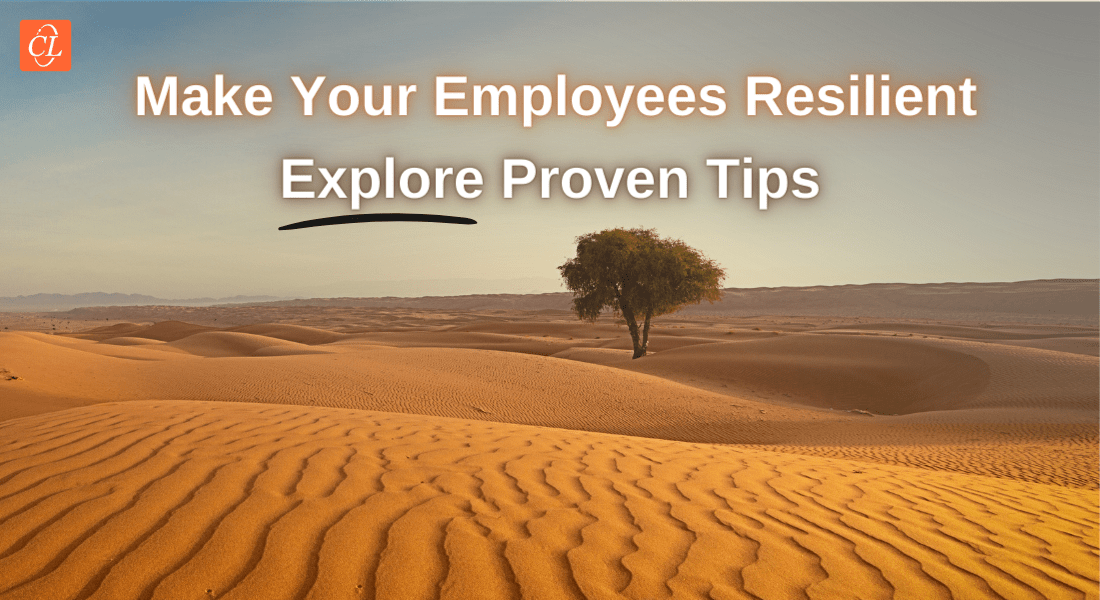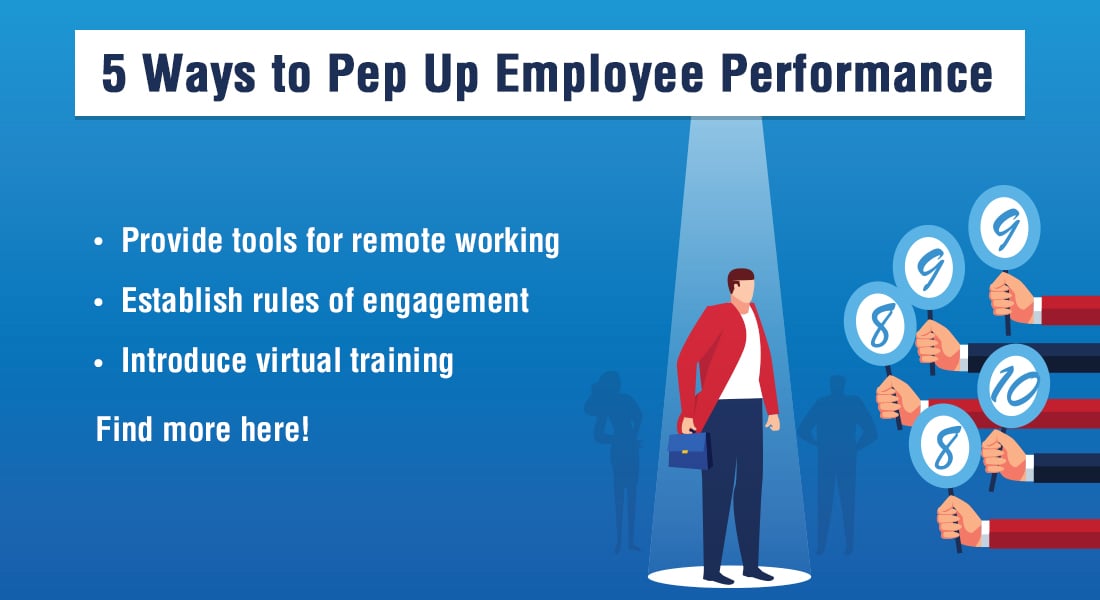How Employee Resilience Helps You Tackle The Problematic Workplace Stressors

The corporate work environment right now is more competitive than ever, and because of that, employees tend to face different challenges every now and then. These challenges aren’t accepted equally by every individual, as some might be strong enough to face them head-on while others might feel stressed out and eventually drop their performance bar. To ensure all the employees are on the same page at their workplaces, an organization needs to focus on building employee resilience and preventing setbacks. This blog will highlight the various workplace stressors and the collective measures to help employees fight these challenges.
Is Employee Resilience Falling Apart in Your Organization?
These tips might help your leaders enhance it –
- Ensure the mental and physical well-being of employees
- Set themselves as a positive example and share their expertise
- Promote learning and development to improve employee performance
Read on to know more about the importance of resilience in the workplace.
4 Most Problematic Stressors in The Workplace
There are obviously more than 4 stressors and a lot of them might depend on the type of workplace while others can be mutual. These stressors can impact the well-being of employees and eventually affect the company’s productivity, so tackling these issues is a critical task that shouldn’t be overlooked. Here are the top 4 most problematic mutual stressors in the workplace that can pressurize employees and impact their mental health.
1. Poor Management
This is probably the biggest turn-off for an employee, especially for newly hired individuals to deal with poor management facilities and practices during their employee onboarding process. Anything ranging from a working desktop, quality of furniture, the room’s aroma, bad canteen food, or even a congested parking space can snatch away the motivation of the employees and affect their productivity.
2. Heavy Workload and Unrealistic Expectations
A lot of employees are dumped with a huge workload and are expected to complete their work within the normal time limits, which is quite unrealistic. Organizations sometimes develop a mindset that employees are supposed to devote all their time and efforts to the company and keep their mental health aside, and this is straight-up toxicity that should be avoided as much as possible.
3. Overly Formal Organizational Culture and Interpersonal Relationships
Organizations sometimes promote a culture that isn’t very healthy for employees and might affect their performance as well as their relationships with others at the workplace. Some organizations restrict conversation outside of work-related queries among the employees which negatively impacts the work environment. People on Reddit have even complained that their organizations didn’t allow colleagues from different departments to come to the office together or in general befriend them, pathetic, isn’t it?
4. Lack of Support and Recognition
Appreciation and recognition can highly motivate employees to work at their best potential and be productive for the company. But when there is a lack of support and rewards, employees might not feel that aura to give their 100 percent. Mostly, numerous unrealistic expectations are the reason why an organization does not appreciate the normal or even above-average efforts of the employees, which isn’t a very good practice to be carried forward.
Importance of Resilience in The Workplace
Even though what I discussed above are the stressors at their worst possible status, there are minor stressors as well, and their impact on employees depends on their individual resilience. Resilience is basically an individual’s ability to bounce back from their setbacks and accept challenges head-on. It is crucial for employees because it helps them to manage their professional work stress and adapt to the respective situations accordingly. If employees aren’t resilient enough, they might ruin their mental health, work relationships, and their personal life sanity. Nowadays, depression rates are at their peak and therapies can’t fix everything, thus becoming strong individually should be recommended for employees.
The Role of Leaders in Improving The Resilience of Employees
A leader has a huge role to play in order to ensure a resilient and agile workforce. Their leadership skills are tested firsthand when it comes to managing numerous employees and making them stronger. Leaders can improve the resilience of employees in the following ways –
1. Ensure the Mental and Physical Well-being of Employees
This is easier said than done, but this factor can definitely not be overlooked. An employee’s productivity and job performance highly depend on their mental and physical health, and leaders have a great role to play to keep these things in check. Leaders can make sure the employees are eating healthy at the workplace, keeping themselves hydrated, and not overwhelming themselves with the workload. For example, a company can provide only healthy lunch (no junk food) at their canteen, along with a glass of fruit juice afterward. They can also make sure no employee would stay at the office an hour past their work shift.
2. Set Themselves as a Positive Example and Share Their Expertise
Before leaders can expect others to be resilient, they need to set themselves as an example so that every other employee can learn from them. Leaders should try to be the most resilient in their workplace so that it motivates the employees to perform at their best. Being a leader, you can always share your words of wisdom with the employees through seminars, conferences, podcasts, and various virtual events, and call it bonus resilience training sessions. You can talk about how to become stronger, how to consider problems as challenges to overcome, why handling workplace stress is crucial for them, etc. This will help the employees become future leaders and carry on the process for their juniors.
3. Promote Learning and Development to Improve Employee Performance
Managers and leaders should understand the needs of their employees, and work on fulfilling them. Incorporating learning and development opportunities within the organization will help the employees get upskilled, gain confidence, and perform efficiently. Learning and Development in a workplace has a broad spectrum to get started with and each strategy or technique can impact the performance of an employee differently. Strategies such as social learning, leadership training, and several eLearning or microlearning sessions can help the employees upskill/reskill themselves, enhance their productivity, and encourage cooperation and harmony in the workplace.
Parting Thoughts!
Employee resilience is all about making your employees capable of working in a competitive environment without complaining and making them mentally strong to deal with multiple workplace stressors. Healthy and motivated employees are your most powerful assets to accomplish your ambitious business goals. Promoting learning and development is one of the crucial aspects to enhance the productivity of employees and eLearning is one of the most popular and widely used strategies for this purpose. Discover how eLearning is influential to achieve your business goals with the help of this free eBook.



![Celebrating CommLab India: 23 Years of Pioneering Success [Infographic]](https://blog.commlabindia.com/hubfs/blogs/23-years-commlab-india.jpg)

